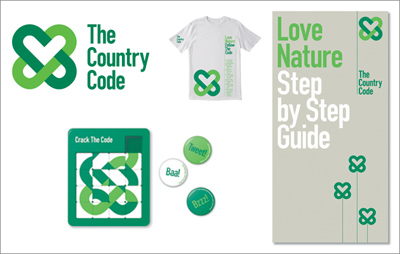|
|
||
|
The rural rulebook is rarely seen these days. But with the right rebrand, it might even add to our enjoyment of nature, says Design Project The Countryside Code is a set of advisory guideline rules for visitors to rural and agricultural areas of the UK. It dates back to the 1930s, when it was called the Country Code. This was a time when the newly formed Ramblers’ Association was championing open access to the countryside, and the fledgling Youth Hostel Association was encouraging people of limited means to partake in healthy activities and enjoy holidays in rural areas of the country. The guidelines helped to promote respect for and preservation of the countryside to an increasing number of visitors to these areas of natural beauty. The code was widely seen in tourist information publicity and public information films during the 1950s, 60s and 70s. Although it still exists – under the auspices of government agency Natural England – it is no longer part of the promotional literature of organisations such as the National Trust and English Heritage. The content of the code has seen changes over the years, but our concept is based on the version from the 1960s and 70s – a definitive ten-point list that communicates the rules in a clear manner: 1. Guard against all risk of fire Our proposal repositions the Countryside Code as a modern multi-dimensional brand that integrates with contemporary lifestyle pursuits to encourage pride, enjoyment, awareness and care for the natural environment. It communicates to all types of people – families, outdoor enthusiasts, casual walkers and cyclists. The message is: enjoy the countryside and the countryside will enjoy having you. Our concept and promotional strategy extends the existing model of the code, moving it beyond a purely advisory guideline and making it widely visible and accessible across a number of communication platforms. We have developed a series of brand “touch points” to promote and express the principles of the code, while also widening its appeal to people who enjoy different aspects of nature.
1. Identity: The intertwining “CC” (representing the words “Country” and “Code”) locks together to create a graphic heart symbol. This emblem is a device that promotes passion, care, respect and preservation. The “Love Nature” strapline echoes the heart symbol.
2. Merchandise: A range of T-shirts, tote bags, sliding puzzles and badges will promote awareness of the code to adults and children.
3. Guide booklets: A series of field guides will gather together, by subject, things to see and do in the countryside.
4. Advertising: The awareness campaign will target the different ways that people enjoy natural environments.
5. Outdoor signage: Signs will be positioned at key rural access points to explain the code and provide information about nature and activities in the surrounding area.
6. Mobile app: This will give GPS-driven information on all aspects of nature and outdoor activity close to the user’s location. |
Words and images Design Project
Photography Lindsay Broadley |
|
|
||
|
Rem Koolhaas believe architects need to pay more attention to rural areas. Read his essay from our Countryside issue here |
||



























